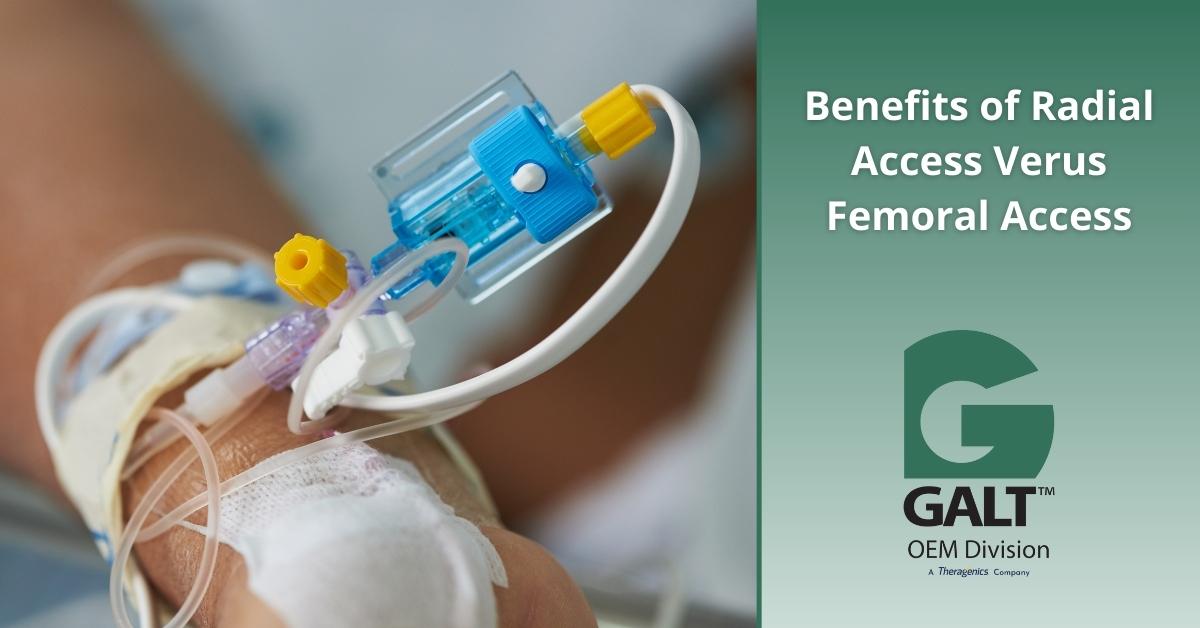6 Benefits of Radial Access Over Femoral Access in Coronary Interventions

While transfemoral coronary interventions have a longer and more widespread history than transradial interventions, there is a growing body of evidence in favor of radial access. What is that evidence and what are the benefits of radial access over femoral access in coronary interventions?
Before looking at the benefits of radial access, it’s important to stress that this is not a one-way street, as there are also advantages with femoral access. Those advantages include the size of the femoral artery, as it is larger than the radial artery. This means it isn’t restricted to smaller catheters. Compared with the radial artery, the femoral artery is also less susceptible to spasms.
While it’s important not to discount the advantages of femoral access, the benefits of radial access are hard to ignore. Here are the six most important benefits of radial access over femoral access in coronary interventions.
Lower Risk of Complications
The starting point is that radial access has a lower risk of complications occurring during and immediately after the procedure. In particular, there is a reduction in major bleeding with radial access compared to femoral access. This is advantageous in all situations, but the benefits are amplified in patients at a higher risk of complications from bleeding.
This reduction in major bleeding also leads to a reduction in ischemic events.
Furthermore, there is a relative risk reduction in terms of access site complications compared to femoral access.
Transradial interventions can also reduce risks in situations where a patient is morbidly obese, has peripheral artery disease that is classed as severe, or is suffering from a groin infection.
Reduced Long-Term Mortality Risk
Studies have shown that radial access results in a lower risk of all-cause long-term mortality compared to femoral access.
There is also a reduced long-term risk from most adverse cardiac events. This includes a reduced risk of unplanned revascularization or myocardial infarction. However, there is no difference in long-term stroke risk with radial access compared to femoral access.
Shorter Recovery Times
Patients who receive transradial coronary interventions spend less time in hospital than those who have transfemoral interventions. Time to ambulation is reduced too. In fact, in many cases, ambulation is immediate post-procedure with radial access.
Improved Patient Satisfaction
Many of the above points mean patients prefer radial access procedures. This preference has been found in a number of studies, including where patients have experienced both radial access and femoral access procedures. Patients with this dual experience prefer radial access because of the reduced risk of major bleeding and faster ambulation.
Wide Range of Possible Procedures
While it is true the femoral artery is more suited to procedures that require the use of larger devices, radial arteries can still usually accommodate 6-French systems. This makes radial access possible for most coronary interventions.
As might be expected, there are other factors that need to be considered in terms of the device that is used. For example, devices specifically designed for radial access typically have features that facilitate transradial interventions. Those features can include hydrophilic properties, small gauge wires, and micro-puncture needles.
However, in most coronary interventions, the size of a catheter device is generally not a limiting factor when it comes to radial access versus femoral access.
Lower Costs
Studies have shown that transradial interventions are less costly than transfemoral interventions. The costs are lower with radial access because hospital stays are shorter and there is a reduced risk of bleeding complications that require hospital readmission.
Radial Access Versus Femoral Access
There will always be situations where femoral access is the right choice for both the patient and the effectiveness of procedures. That said, the benefits of radial access are clear and compelling.
At Galt Medical, we offer a range of products suitable for transradial interventions. This includes products with 6-French coaxial sheath assemblies, micro-introducers, and hemostasis valve adapters. Get in touch today to discuss your requirements.
